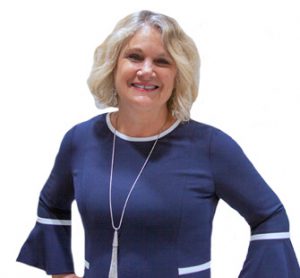Revenue Cycle leaders are accustomed to frequent industry changes whether they are regulatory, operational or technology related, and are constantly tweaking workflows to adapt to these changes and increase efficiencies.
The COVID-19 crisis has presented us with opportunities to re-tweak existing processes and evaluate regulatory changes that will impact our financial operations and results.
Balance Billing for Treatment Related to COVID-19
As a component of the CARES Act, providers receiving funding are obligated to abstain from balance billing any patient for COVID-19 related treatment.Most billing departments have systematic and automatic processes in place to generate a balance bill following an insurance payment.Providers receiving funds will need to:
- Have a mechanism in place to identify COVID-19 patients
- Prevent balance billing to COVID-19 patients
- Establish controls to ensure COVID-19 patients are not balance billed
Conversion of Self-Pay to Medicaid
With 16 million jobless claims in March and April, it is expected that many who are unemployed have also lost their health insurance, and uninsured patients with COVID-19 may be eligible for Medicaid.With state office closings and social distancing policies emphasized, hospitals will need to ensure their processes are optimal to timely convert a self-pay patient to Medicaid.
- Revisit presumptive eligibility (PE) procedures. Since PE allows providers to screen for Medicaid eligibility and temporarily enroll those who appear eligible, these workflows will be paramount under the COVID-19 crisis.
- Hospitals who utilize Medicaid eligibility vendor partners may evaluate frequency of meetings and reporting. Increased communication with vendor partners during and following this crisis may increase optimal conversions to Medicaid.
- Revisit current self-pay Key Performance Indicators (KPIs) and revise as needed to account for COVID-19 metrics.
Telemedicine
In response to requests for flexibility and broadened access to telemedicine services during the COVID-19 crisis, CMS has relaxed telemedicine regulations which were previously limited and focused more for rural settings. Beginning March 6, 2020, physicians, nurse practitioners, clinical psychologists and licensed social workers can offer telehealth services. Hospitals and other providers have now ramped up telemedicine care very quickly to respond to the needs of their patients and communities.Now that two months have passed, and the dust has slightly settled after an expedited implementation, it may be a good time for telemedicine providers to audit a small sample of claims to ensure compliance with CMS regulations.
Coding COVID-19
The Centers for Disease Control and Prevention (CDC) has provided guidance related to the ICD-10 coding for COVID-19. Some highlights are as follows. The detailed guidelines can be found here.
- Code only confirmed cases of the 2019 novel coronavirus disease (COVID-19); for a confirmed diagnosis, assign code U07.1.This includes: As documented by the provider, documentation of a positive test result or a presumptive positive test result.When a provider documents “suspected”, “possible”, “probable” or “inconclusive” COVID-19, do not assign code U07.1. Assign code(s) explaining the reason for the encounter, such as fever.
- With regards to sequencing, when COVID-19 meets the definition of principal diagnosis, code U07.1 should be sequenced first except in the case of obstetrics patients.
- Asymptomatic individuals who test positive for COVID-19 are coded with U07.1.
It is imperative, that providers properly code U07.1, as it’s the trigger for the 20% inpatient DRG bump CMS will reimburse hospitals for Medicare beneficiaries treated for COVID-19; per Section 3710 of the CARES Act.
Unbilled Receivables
Outside of traditional unbilled receivables such as the “Discharged Not Final Billed”,we are all challenged with what I like to call the “Billed Unbilled” receivables.These receivables look billed, as they have bill dates, but reside in our billing platforms waiting for inter-departmental collaboration or the Medicare Return to Provider file needing claim correction in order for the claim to process. In theory, these claims are not billed.Under normal conditions, these areas can be challenging and require management oversight and strong processes to ensure claims do not bottleneck.Now that we are in a different mode, with staff working remotely, staff who may be ill and a potential decrease in resources, we could find ourselves with more accounts receivable in the “Unbilled” bucket.It is imperative that KPIs are monitored and additional workflows are added where needed to ensure processes are working optimally and claims are not bottlenecked.
Even though our world has changed, this crisis has afforded us the opportunity to continue to evaluate our Revenue Cycle processes and to identify areas where we can continue to improve.
Author: Kathy Ruggieri | [email protected]
Healthcare Advisory Services

